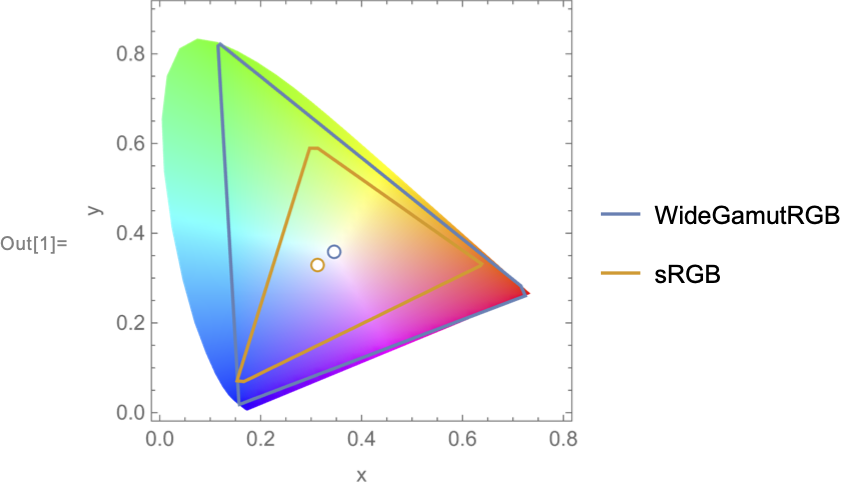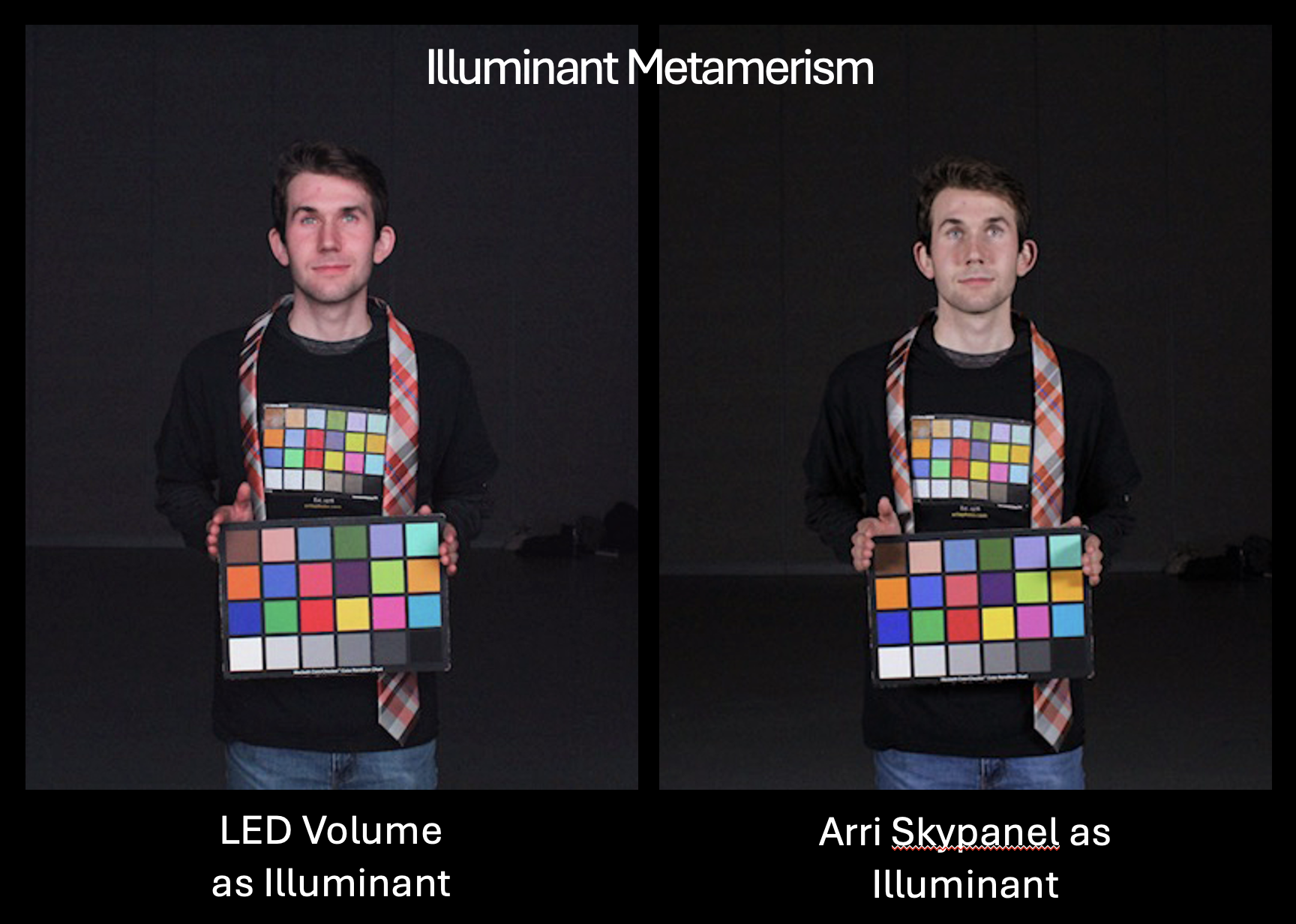graph LR
A[Device] -->|Characterization| B[Profile]
B -->|Calibration| C[Standard]
David hasn’t signed off on all this yet, so it’s still a bit of a WIP. –fp
Introduction
This is a very brief introduction. You’ll see references to external information that you can use to dive deeper into the subject.
Things that have an idea of ‘color’
When I say ‘idea of color’, I mean that they can represent color in some way. This could be through the use of color spaces, color profiles, physical or biological limitations / constraints, or some other method. Here are some examples:
- Cameras
- Monitors
- Projectors
- LED Walls
- Humans
- Software
- Engineers
Here is a link to a few pages from Koenderink’s Color for the Sciences that discuss the idea of color from a philosophical and scientific perspective.
Color Spaces and Gamuts
Color spaces define the range of colors that can be represented. A gamut is a subset of colors within a color space.
 A gamut or two, the smaller one is the notorious sRGB space, the larger one is a wider gamut space. The dots in the centers are the white points for each space.
A gamut or two, the smaller one is the notorious sRGB space, the larger one is a wider gamut space. The dots in the centers are the white points for each space.
Note that the horseshoe shape is the CIE 1931 color space, which is a standard color space used to define other color spaces. The ‘ROYGBIV spectrum’ of wavelengths is shown on the outside of the horseshoe and points inside the horseshoe represent colors that can be created by mixing those wavelengths.
The three vertices making out the triangles are the primary colors of the color space. The triangle represents the gamut of colors that can be represented by mixing those three primary colors. Your monitor, for example, uses red, green, and blue as its primary colors, and mixtures of them can represent any color within the triangle.
It’s probably important to note that the ‘native’ primaries in your display (e.g., the uncorrected RGBs) are not always exactly the same as the primaries in a color space (e.g., sRGB). Your display does some magic to get from its native primaries to the color space primaries. There’s a whole process that entails various transfer functions, their inverses, some linear algebra and a bit of magic and/or prayer to get this to work.
The main tools we need to travel around between the color spaces of various devices are the primaries, the white point, and the transfer function also known as the gamma \(\gamma\) curve - an exponent that helps compensate for the non-linearities of human brightness perception and the physics of the display devices.
These are declared as standards by various organizations like the International Telecommunication Union (ITU), the Society of Motion Picture and Television Engineers (SMPTE), and a whole host of friends.1
Standards
- sRGB: Commonly used in monitors and web-based content.
- Rec. 709: Standard color space for HD video.
- DCI-P3: Used in digital cinema projection.
- Rec. 2020: A wider color space used for UHD and HDR content.
An encoding standard that is popular in the film industry is the ACES color space. It is designed to be a universal color space that can be used for all stages of production and post-production.
And finally, OCIO or the Open Color I/O library is a tool used in many software packages to manage color spaces, profiles, and traveling between them.
Calibration and Characterization
- Characterization: Describing how a device reproduces color.
- Calibration: Adjusting a device to a known standard.
The process of characterizing a device involves measuring the colors that the device can produce. This is done by measuring the colors that the device produces when given a known input. The result is a profile that describes the device’s color reproduction capabilities.
These profiles can be used to calibrate a device to a known standard, or, in the case of our VP work here, adjust colors on the wall to mach the colors in the scene.
There are tons challenges here, the fact that cameras and human eyes don’t deal with color in the same way being one of the biggest. The illustration below shows a camera’s interpretation of the same scene under different illumination conditions.

OCIO
ACES
VPColor
UE
Footnotes
“The beauty of standards is that there are so many to choose from.” - Andrew S. Tanenbaum↩︎